Surveillance and Alert Systems in Qatar Radiography Department
VerifiedAdded on 2022/11/16
|6
|573
|352
Report
AI Summary
This report provides an abstract for an oral presentation on surveillance and alert systems in a radiography department in Qatar, specifically focusing on the Middle East respiratory syndrome coronavirus (MERS-CoV) protocol. The abstract outlines the background, methods, results, and conclusion of a study conducted at Hamad General Hospital. The research aimed to examine the efficiency of the MERS-CoV surveillance protocol in the Emergency Department and Radiography Department. The methods involved retrospective chart reviews and the generation of an algorithm to triage and screen patients. The results indicated that the surveillance protocol minimized the number of patients requiring testing and enhanced the accuracy and turnaround time within the radiography department. The conclusion emphasizes the importance of efficient surveillance systems in mitigating the impact of communicable diseases and the need for continuous monitoring to protect public health. The abstract includes references in Vancouver format and lists keywords relevant to the study.
1 out of 6
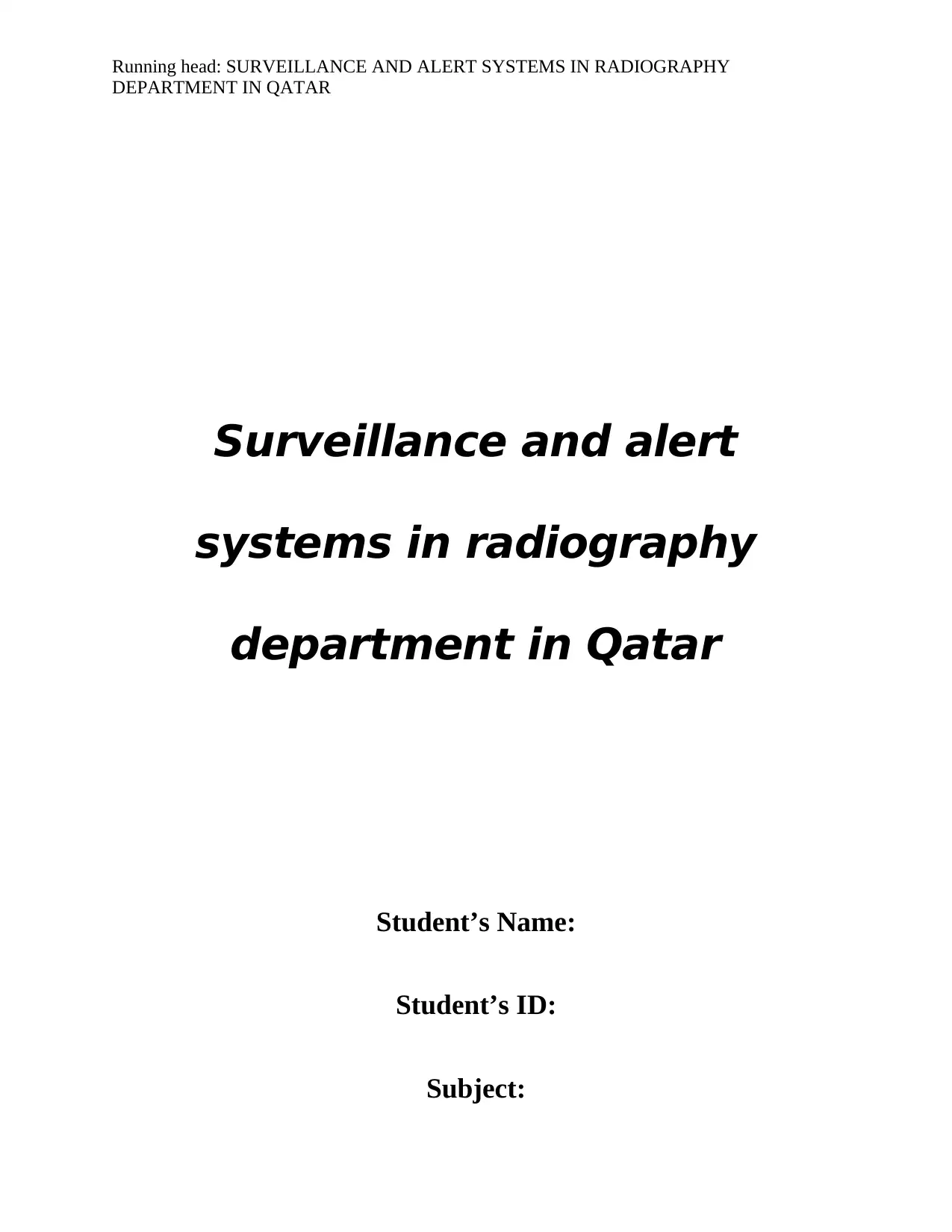
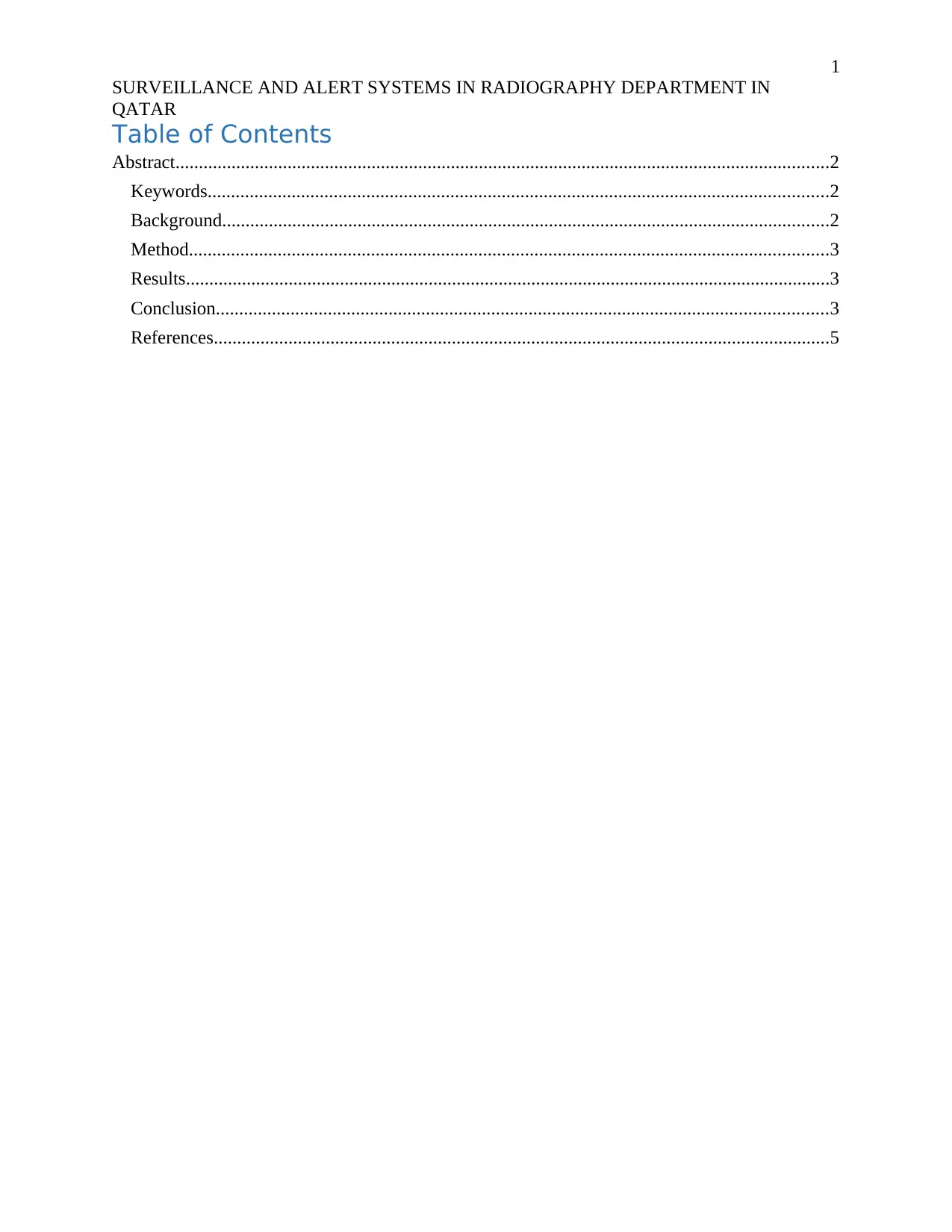
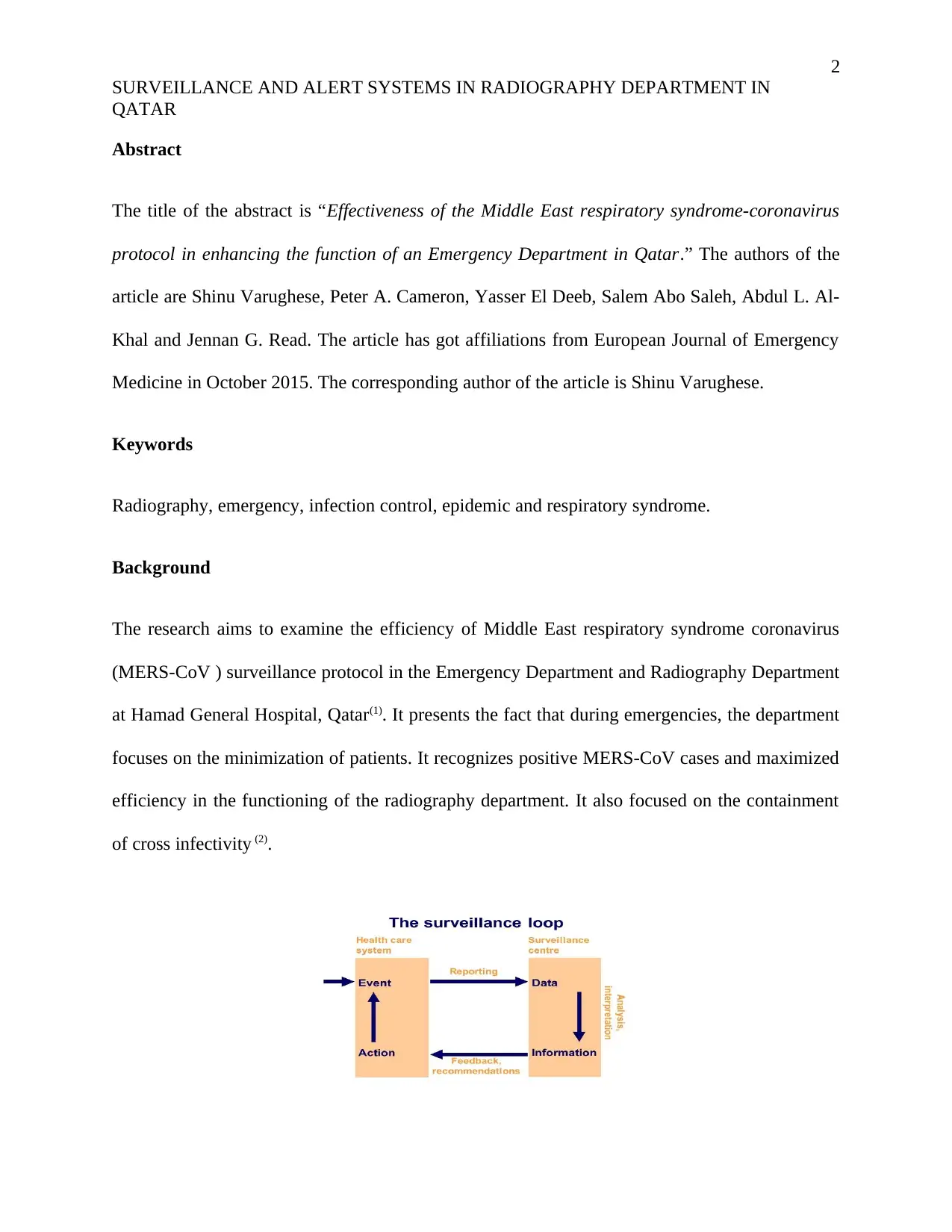

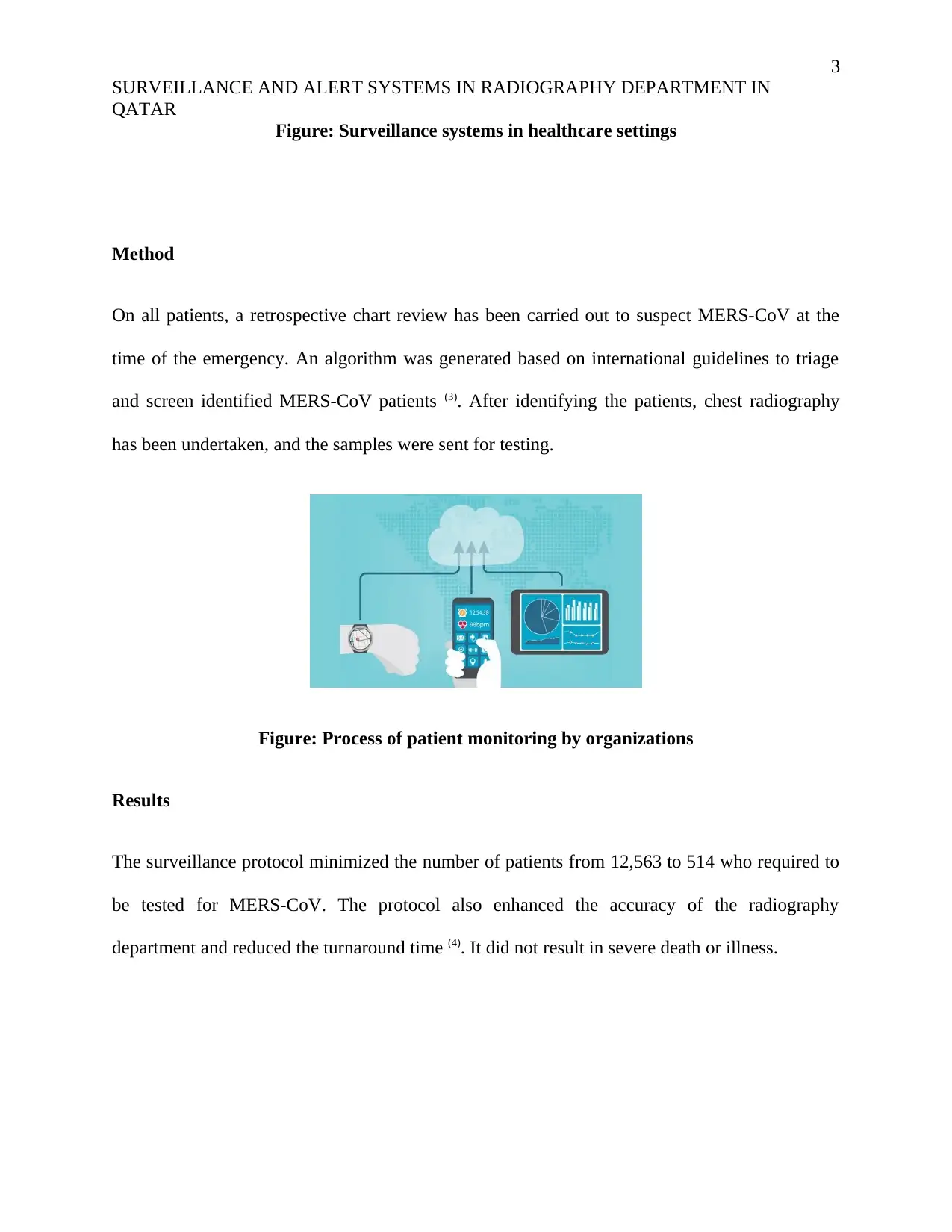
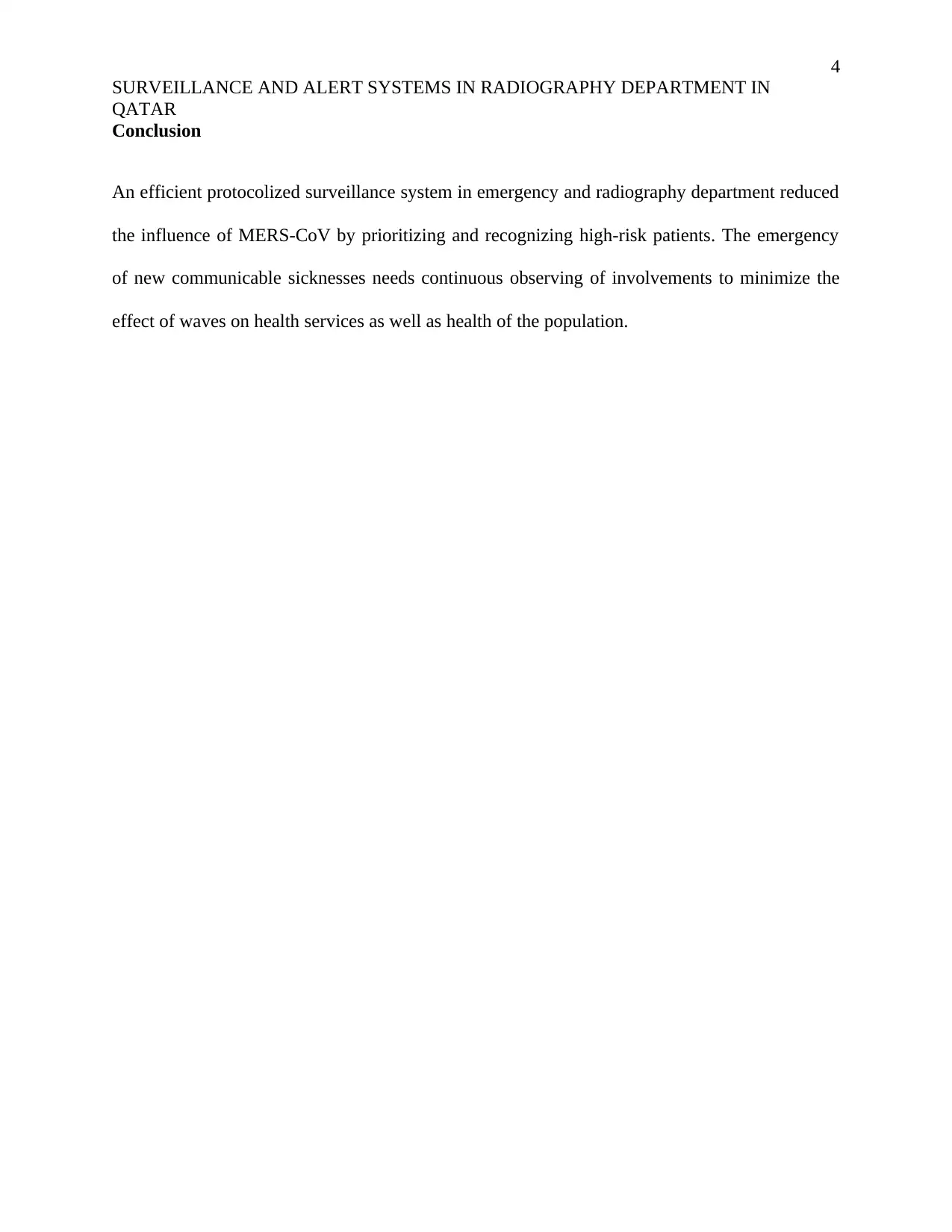
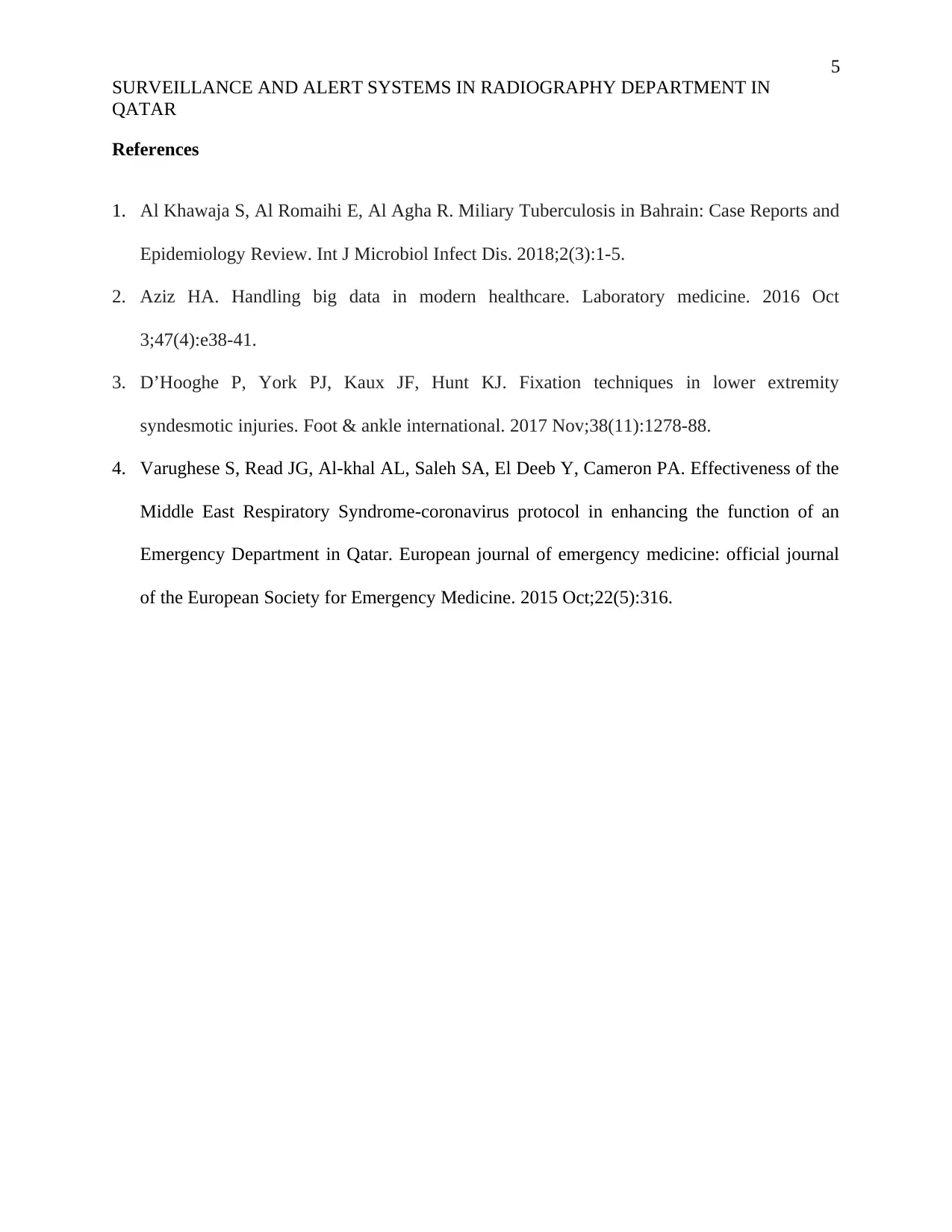






![[object Object]](/_next/static/media/star-bottom.7253800d.svg)